Is Wind Energy Practical for Me?
Can I use wind energy to power my home? More people across the country are asking this question as they look for a hedge against increasing electricity rates and a way to harvest their local wind resources. Although wind turbines large enough to provide a significant portion of the electricity needed by the average U.S. home generally require 1 acre of property or more, approximately 19.3% of the U.S. population lives in rural areas and may own land parcels large enough to accommodate a wind energy system.
A small wind electric system will work for you if:
Why Should I Choose Wind?
Wind energy systems can be one of the most cost-effective home-based renewable energy systems. Depending on your wind resource, a small wind energy system can lower your electricity bill slightly or up to 100%, help you avoid the high costs of extending utility power lines to remote locations, and sometimes can provide DC or off-grid power. In addition, wind energy is clean, indigenous, renewable energy.
How Do Wind Turbines Work?
Wind is created by the unequal heating of the Earth's surface by the sun. Wind turbines convert the kinetic energy in wind into mechanical power that runs a generator to produce clean electricity. Today's turbines are versatile modular sources of electricity. Their blades are aerodynamically designed to capture the maximum energy from the wind. The wind turns the blades, which spin a shaft connected to a generator or the generator's rotor, which makes electricity. If you want to know the details, please visit How Do Wind Turbines Work?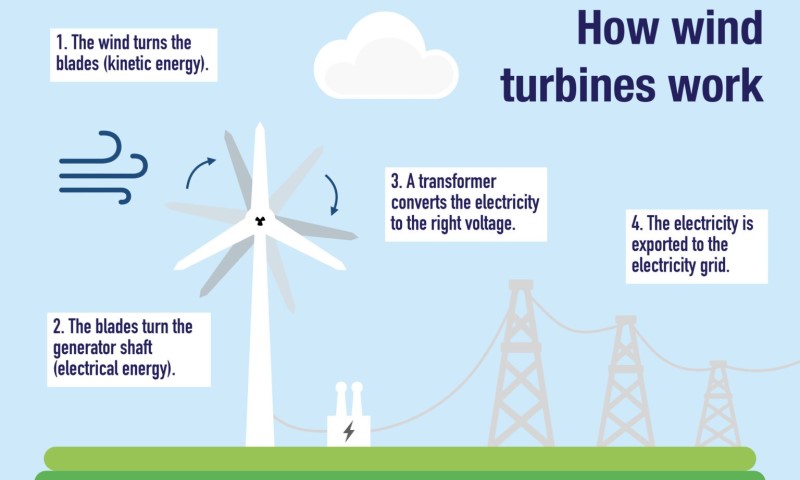
First, How Can I Make My Home More Energy Efficient?
Before choosing a wind system for your home, you should consider reducing your energy consumption by making your home or business more energy efficient. Reducing your energy consumption will significantly lower your utility bills and will reduce the size of the home-based renewable energy system you need. To achieve maximum energy efficiency, you should take a whole-building approach. View your home as an energy system with interrelated parts, all of which work synergistically to contribute to the efficiency of the system. From the insulation in your home's walls to the light bulbs in its fixtures, there are many ways to make your home more efficient.
A small wind energy system can provide you with a practical and economical source of electricity if:
Zoning refers to the general local regulations that allow and restrict various types of projects, whereas permitting refers to acquiring permits for a specific project within the scope of those zoning rules.
The zoning and permitting processes for wind energy installations seek to address safety, aesthetics, and community interests and concerns. Some of these concerns might include sound level, visual impact, wildlife impact, TV/radio interference, ice shedding, or broken equipment.
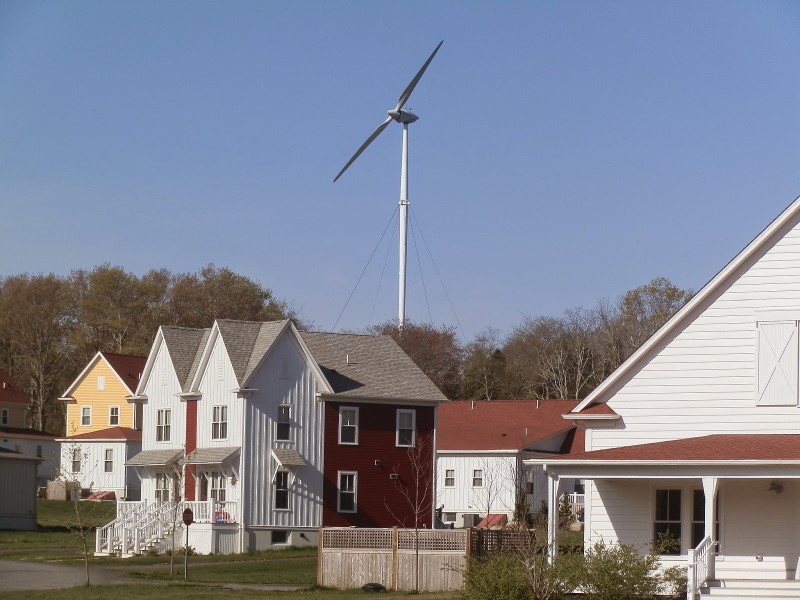
Practices vary dramatically across the country so becoming familiar with the local regulations, authorities, and general requirements is helpful. In some cases, zoning and permitting expectations are consistent and straightforward. In other cases, hearings may be required and the process is uncertain. A project designed within the existing limitations will experience a much smoother permitting process and will be more likely to receive a permit. But if your project falls outside of defined limits, it must usually undergo a special review process to obtain a variance from the existing rules and regulations — a potentially expensive and time-consuming process that often involves at least one public hearing and has no guarantee of success.
Before you invest in a wind energy system, you should research potential zoning and permitting obstacles. Some jurisdictions restrict the height of the structures permitted in residential-zoned areas, although variances may be obtained. Most zoning ordinances have a height limit of 35 feet.
You can find out more about zoning and permitting requirements by:
What Size Wind Turbine Do I Need?
The size of the wind turbine you need depends on your application. Small turbines range in size from 20 Watts to 100 kilowatts (kW). The smaller or "micro" (20- to 500-Watt) turbines are used in applications such as charging batteries for recreational vehicles and sailboats.
One- to 10-kW turbines can be used in applications such as pumping water. Wind energy has been used for centuries to pump water and grind grain. Although mechanical windmills still provide a sensible, low-cost option for pumping water in low-wind areas, farmers and ranchers are finding that wind electric pumping is more versatile and they can pump twice the volume for the same initial investment. In addition, mechanical windmills must be placed directly above the well, which may not take advantage of available wind resources. Wind-electric pumping systems can be placed where the wind resource is the best and connected to the pump motor with an electric cable. However, in areas with a low wind resource, mechanical windmills can provide more efficient water pumping.
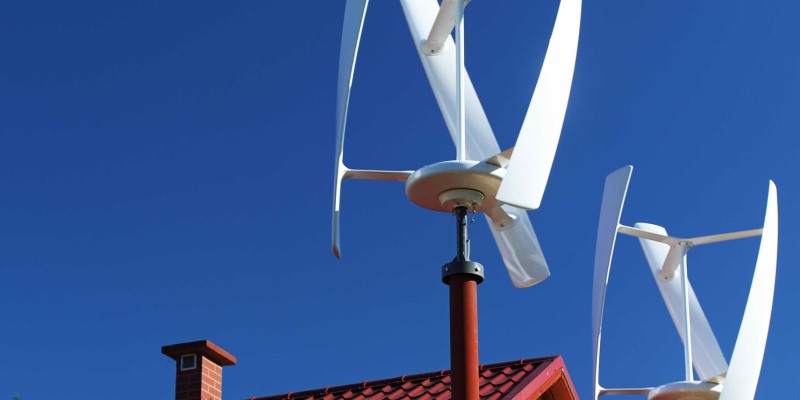
Turbines used in residential applications can range in size from 400 Watts to 100 kW (100 kW for very large loads), depending on the amount of electricity you want to generate. For residential applications, you should establish an energy budget and see whether financial incentives are available. This information will help determine the turbine size you will need. Because energy efficiency is usually less expensive than energy production, making your house more energy efficient will probably be more cost effective and will reduce the size of the wind turbine you need. Wind turbine manufacturers, dealers, and installers can help you size your system based on your electricity needs and the specifics of your local wind resource and micro-siting.
A typical home uses approximately 10,649 kilowatt-hours (kWh), an average of 877 kWh per month. Depending on the average wind speed in the area, a wind turbine rated in the range of 5 to 15 kW would be required to make a significant contribution to this demand. A 1.5-kW wind turbine will meet the needs of a home requiring 300 kWh per month in a location with a 14 MPH (6.26 meters per second) annual average wind speed. The manufacturer, dealer, or installer can provide you with the expected annual energy output of the turbine as a function of annual average wind speed. The manufacturer will also provide information about any maximum wind speeds at which the turbine is designed to operate safely. Most turbines have automatic overspeed governing systems to keep the rotor from spinning out of control in extremely high winds.
Along with information about your local wind resource (wind speed and direction) and your energy budget, this information will help you decide which size turbine will best meet your electricity needs. If you're ready for a small home power generation system, Windustry offers quality products: Vertical Axis Wind Turbines and Horizontal Axis Wind Turbines.
A small wind electric system will work for you if:
- There is enough wind where you live.
- Tall towers are allowed in your neighborhood or rural area (or you live in flat terrain with no tall obstacles nearby).
- You have enough space.
- You can determine how much electricity you need or want to produce.
- You can interconnect with your utility service provider (assuming you have a grid-connection application).
- It works for you economically.
Why Should I Choose Wind?
Wind energy systems can be one of the most cost-effective home-based renewable energy systems. Depending on your wind resource, a small wind energy system can lower your electricity bill slightly or up to 100%, help you avoid the high costs of extending utility power lines to remote locations, and sometimes can provide DC or off-grid power. In addition, wind energy is clean, indigenous, renewable energy.
How Do Wind Turbines Work?
Wind is created by the unequal heating of the Earth's surface by the sun. Wind turbines convert the kinetic energy in wind into mechanical power that runs a generator to produce clean electricity. Today's turbines are versatile modular sources of electricity. Their blades are aerodynamically designed to capture the maximum energy from the wind. The wind turns the blades, which spin a shaft connected to a generator or the generator's rotor, which makes electricity. If you want to know the details, please visit How Do Wind Turbines Work?

First, How Can I Make My Home More Energy Efficient?
Before choosing a wind system for your home, you should consider reducing your energy consumption by making your home or business more energy efficient. Reducing your energy consumption will significantly lower your utility bills and will reduce the size of the home-based renewable energy system you need. To achieve maximum energy efficiency, you should take a whole-building approach. View your home as an energy system with interrelated parts, all of which work synergistically to contribute to the efficiency of the system. From the insulation in your home's walls to the light bulbs in its fixtures, there are many ways to make your home more efficient.
- Improving insulation and sealing air leaks in a home are two of the fastest and most cost-effective ways to reduce energy waste. Homes built prior to 1950 use approximately 60% more energy per square foot than those constructed in 2000 or later.
- Turning your thermostat down 7° to 10°F for 8 hours a day from its normal setting can save as much as 10% on heating and cooling.
- Low-e exterior or interior storm windows can save you 12% to 33% on heating and cooling costs, depending on the type of window already installed in the home.
A small wind energy system can provide you with a practical and economical source of electricity if:
- Your property has a good wind resource.
- Your home or business is located on at least 1 acre of land.
- Your local zoning codes or covenants allow wind turbines.
- You can determine how much electricity you need or want to produce.
- It works for you economically (you may be eligible for state/utility or federal incentives).
- You're comfortable with long-term investments.
- Your average electricity bills are high or you don't have access to utility grid power.
Zoning refers to the general local regulations that allow and restrict various types of projects, whereas permitting refers to acquiring permits for a specific project within the scope of those zoning rules.
The zoning and permitting processes for wind energy installations seek to address safety, aesthetics, and community interests and concerns. Some of these concerns might include sound level, visual impact, wildlife impact, TV/radio interference, ice shedding, or broken equipment.

Practices vary dramatically across the country so becoming familiar with the local regulations, authorities, and general requirements is helpful. In some cases, zoning and permitting expectations are consistent and straightforward. In other cases, hearings may be required and the process is uncertain. A project designed within the existing limitations will experience a much smoother permitting process and will be more likely to receive a permit. But if your project falls outside of defined limits, it must usually undergo a special review process to obtain a variance from the existing rules and regulations — a potentially expensive and time-consuming process that often involves at least one public hearing and has no guarantee of success.
Before you invest in a wind energy system, you should research potential zoning and permitting obstacles. Some jurisdictions restrict the height of the structures permitted in residential-zoned areas, although variances may be obtained. Most zoning ordinances have a height limit of 35 feet.
You can find out more about zoning and permitting requirements by:
- Contacting the local building inspector, board of supervisors, or planning board. They can tell you if you will need to obtain a building permit and will provide you with a list of requirements.
- Utilizing the Clean Energy States Alliance's Distributed Wind Energy Zoning and Permitting: A Toolkit for Local Governments.
- Visiting the Distributed Wind Energy Association's Permitting and Zoning Resource Center.
What Size Wind Turbine Do I Need?
The size of the wind turbine you need depends on your application. Small turbines range in size from 20 Watts to 100 kilowatts (kW). The smaller or "micro" (20- to 500-Watt) turbines are used in applications such as charging batteries for recreational vehicles and sailboats.
One- to 10-kW turbines can be used in applications such as pumping water. Wind energy has been used for centuries to pump water and grind grain. Although mechanical windmills still provide a sensible, low-cost option for pumping water in low-wind areas, farmers and ranchers are finding that wind electric pumping is more versatile and they can pump twice the volume for the same initial investment. In addition, mechanical windmills must be placed directly above the well, which may not take advantage of available wind resources. Wind-electric pumping systems can be placed where the wind resource is the best and connected to the pump motor with an electric cable. However, in areas with a low wind resource, mechanical windmills can provide more efficient water pumping.

Turbines used in residential applications can range in size from 400 Watts to 100 kW (100 kW for very large loads), depending on the amount of electricity you want to generate. For residential applications, you should establish an energy budget and see whether financial incentives are available. This information will help determine the turbine size you will need. Because energy efficiency is usually less expensive than energy production, making your house more energy efficient will probably be more cost effective and will reduce the size of the wind turbine you need. Wind turbine manufacturers, dealers, and installers can help you size your system based on your electricity needs and the specifics of your local wind resource and micro-siting.
A typical home uses approximately 10,649 kilowatt-hours (kWh), an average of 877 kWh per month. Depending on the average wind speed in the area, a wind turbine rated in the range of 5 to 15 kW would be required to make a significant contribution to this demand. A 1.5-kW wind turbine will meet the needs of a home requiring 300 kWh per month in a location with a 14 MPH (6.26 meters per second) annual average wind speed. The manufacturer, dealer, or installer can provide you with the expected annual energy output of the turbine as a function of annual average wind speed. The manufacturer will also provide information about any maximum wind speeds at which the turbine is designed to operate safely. Most turbines have automatic overspeed governing systems to keep the rotor from spinning out of control in extremely high winds.
Along with information about your local wind resource (wind speed and direction) and your energy budget, this information will help you decide which size turbine will best meet your electricity needs. If you're ready for a small home power generation system, Windustry offers quality products: Vertical Axis Wind Turbines and Horizontal Axis Wind Turbines.
Post a Comment:
You may also like:

Featured Articles
How Much Energy Will Wind Turbine ...
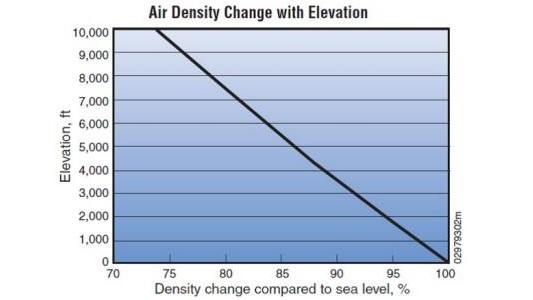 According to the AWEA Small Wind Turbine Performance and Safety Standard, the Rated Annual Energy of a wind turbine for ...
According to the AWEA Small Wind Turbine Performance and Safety Standard, the Rated Annual Energy of a wind turbine for ...
 According to the AWEA Small Wind Turbine Performance and Safety Standard, the Rated Annual Energy of a wind turbine for ...
According to the AWEA Small Wind Turbine Performance and Safety Standard, the Rated Annual Energy of a wind turbine for ...How do Wind Turbines Work?
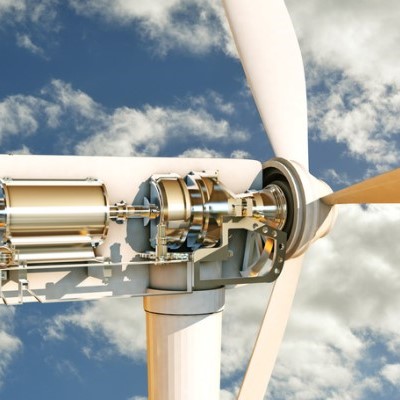 Wind turbines generate electrical power in the same way as all other generation technologies. The only difference is in the ...
Wind turbines generate electrical power in the same way as all other generation technologies. The only difference is in the ...
 Wind turbines generate electrical power in the same way as all other generation technologies. The only difference is in the ...
Wind turbines generate electrical power in the same way as all other generation technologies. The only difference is in the ...What Sounds Do Turbines Make?
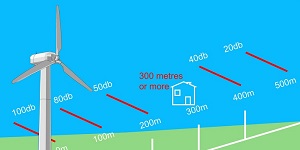 Modern low RPM (Revolutions Per Minute) turbines are very quiet, with sound levels usually below that of typical ambient noise in ...
Modern low RPM (Revolutions Per Minute) turbines are very quiet, with sound levels usually below that of typical ambient noise in ...
 Modern low RPM (Revolutions Per Minute) turbines are very quiet, with sound levels usually below that of typical ambient noise in ...
Modern low RPM (Revolutions Per Minute) turbines are very quiet, with sound levels usually below that of typical ambient noise in ...Does the Sound of Wind Turbines Affect ...
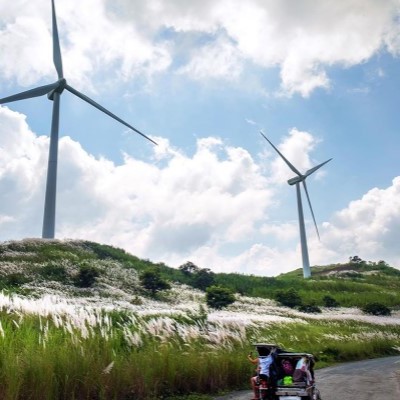 With respect to wind turbine noise, the one adverse impact that is supported by epidemiological data is an association between ...
With respect to wind turbine noise, the one adverse impact that is supported by epidemiological data is an association between ...
 With respect to wind turbine noise, the one adverse impact that is supported by epidemiological data is an association between ...
With respect to wind turbine noise, the one adverse impact that is supported by epidemiological data is an association between ...Is Wind Energy Practical for Me?
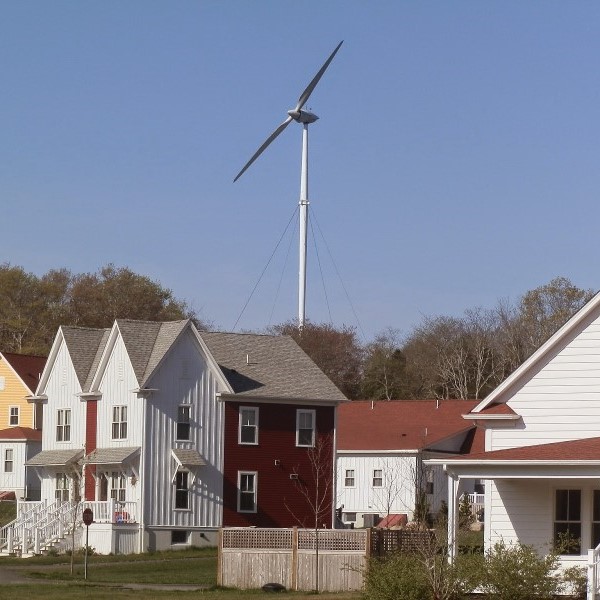 Can I use wind energy to power my home? More people across the country are asking this question as they look for a hedge ...
Can I use wind energy to power my home? More people across the country are asking this question as they look for a hedge ...
 Can I use wind energy to power my home? More people across the country are asking this question as they look for a hedge ...
Can I use wind energy to power my home? More people across the country are asking this question as they look for a hedge ...